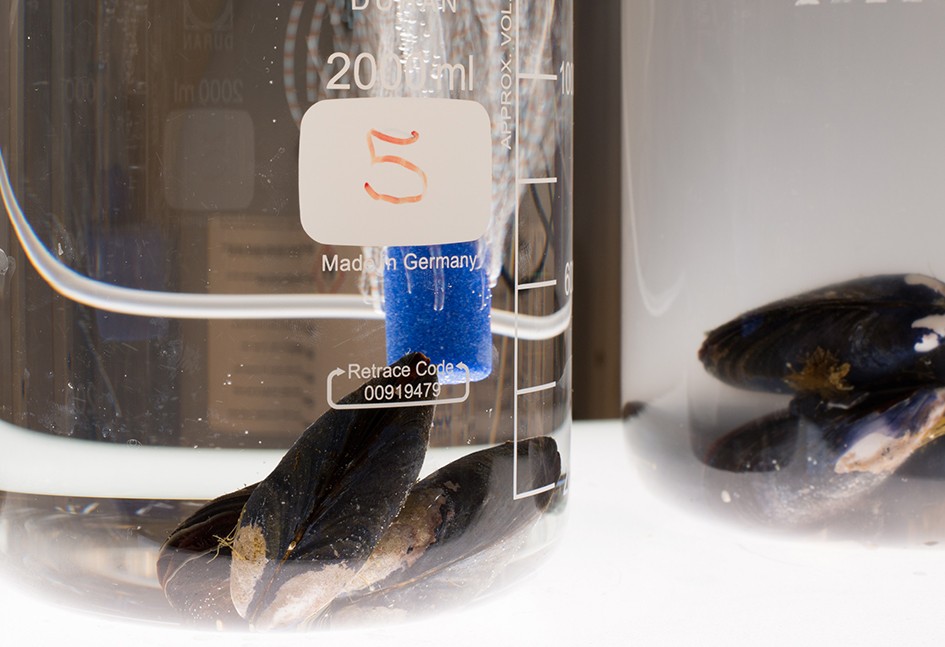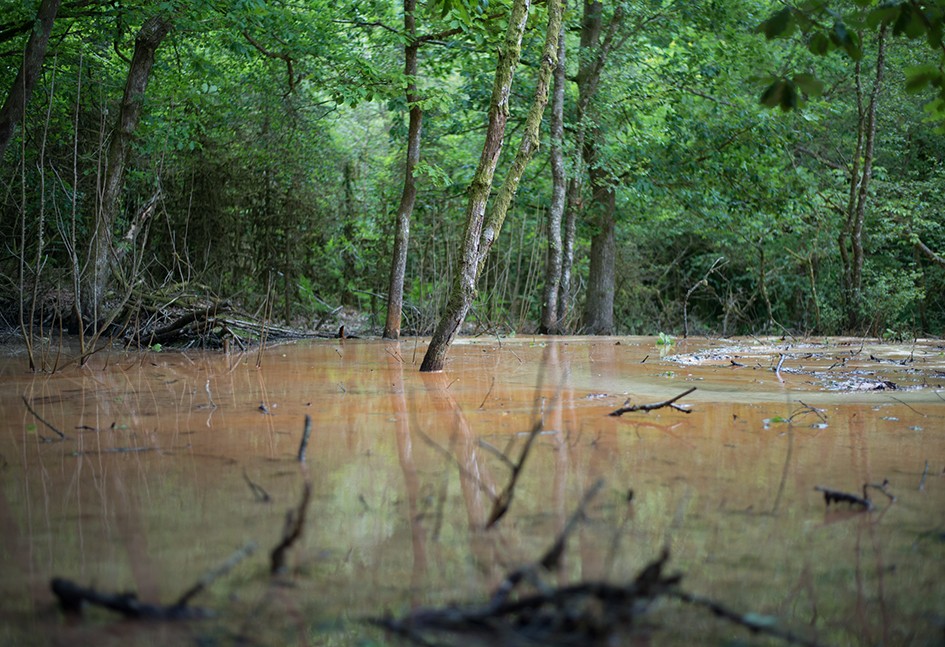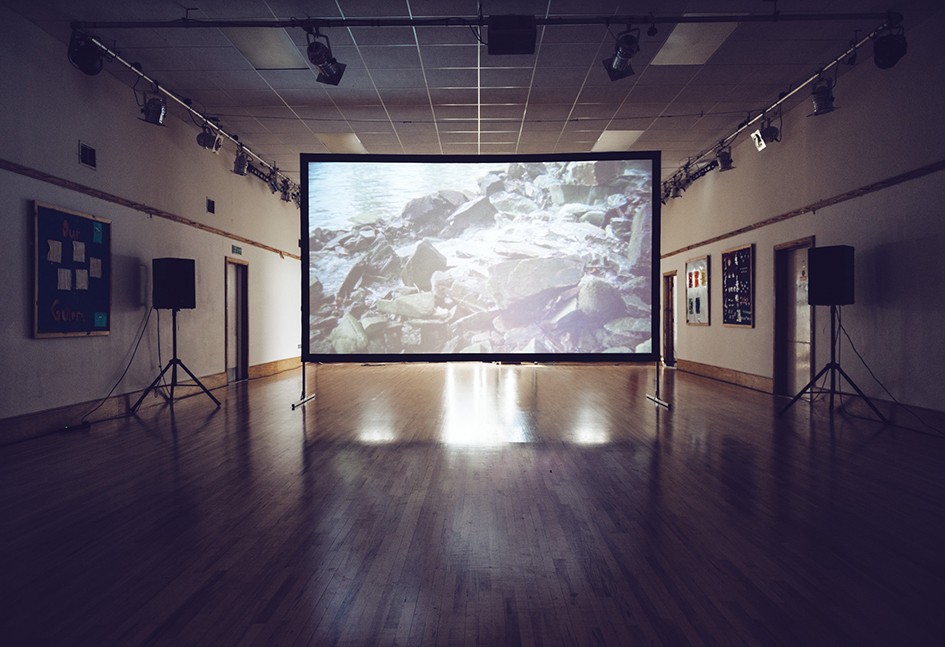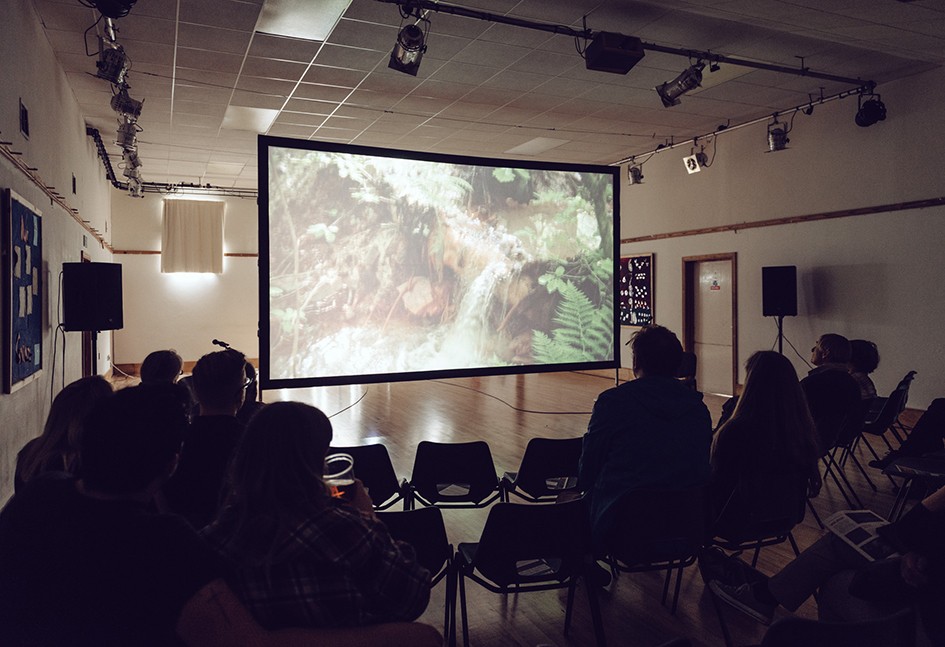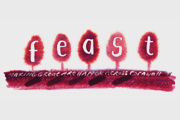Taking us deep below the surface of the Tamar Valley, Orlow’s camera follows the river, and the mineral effluent that flows with it, in a reverse journey from the sea back to its source in the deep caves and mines below. Encompassing the chemistry labs of Plymouth University and River Tamar’s landscape, we are exposed to a bubbling test tube of mussels adapted by scientific research juxtaposed with lyrical images of the Tamar’s banks, revealing the chalky blue substances which ring the paths of its tributaries.
The enigmatic mineral forms of copper, arsenic and a mussel’s shell floating in a darkened space of the digital rather than the geological, halt the film’s watery momentum to hold the viewer in a space of local stories both magical, as well as factual: recounting Houdini’s famous escape from confinement in a creek in Plymouth to the effects of arsenic mining, as well as William Morris’ notorious use of arsenic pigment in his wallpapers.
We also become aware that Orlow’s reversed journey from sea to source and from current moment to past history, is echoed in the film material itself: perceptible in the backwards flow of the coursing streams through its landscape, as in the clicking shells of the mussels contained within their test tubes. Through this filmic reversal, Orlow gives pause for thought, wishing to take us back and make us look again at the little noticed and unpredicted effects of natural minerals on the landscape, invisible in the river’s flow and on the mussel’s shell.

Uriel Orlow is known for his modular multi-media installations and layered single screen works that take specific locations and micro-histories as starting points to explore the blinds spots of representation. Orlow engages in extended periods of research and immersion and works across video, photography, drawing and sound to bring different image-regimes and narrative modes into correspondence.
Uriel Orlow’s thought provoking art works use film in conjunction with objects, images and performance to explore how places are haunted by past histories of conflict, territory and nationality. In works such as Remnants of the Future (2010), for example, forgotten architectural ruins of the communist era become a meditation on the displacements of Armenian history, whilst Yellow Limbo (2011), returns through films both archival and contemporary to moments from recent history, such as the occupation of the Suez Canal. His film for the River Tamar Project, The Mussels’ Perspective, uses his research of the local area to explore the history of mining in the Tamar Valley and its continued legacy on its people and its landscape.
The Mussels’ Perspective (2014) – a film by Uriel Orlow was commissioned by the River Tamar Project and made possible with a kind contribution from Arts Council of England, Plymouth University, Cornish Mining World Heritage and FEAST. The film was premièred at Calstock Village Hall in September 2014 as part of the It’s All About the River film festival.
